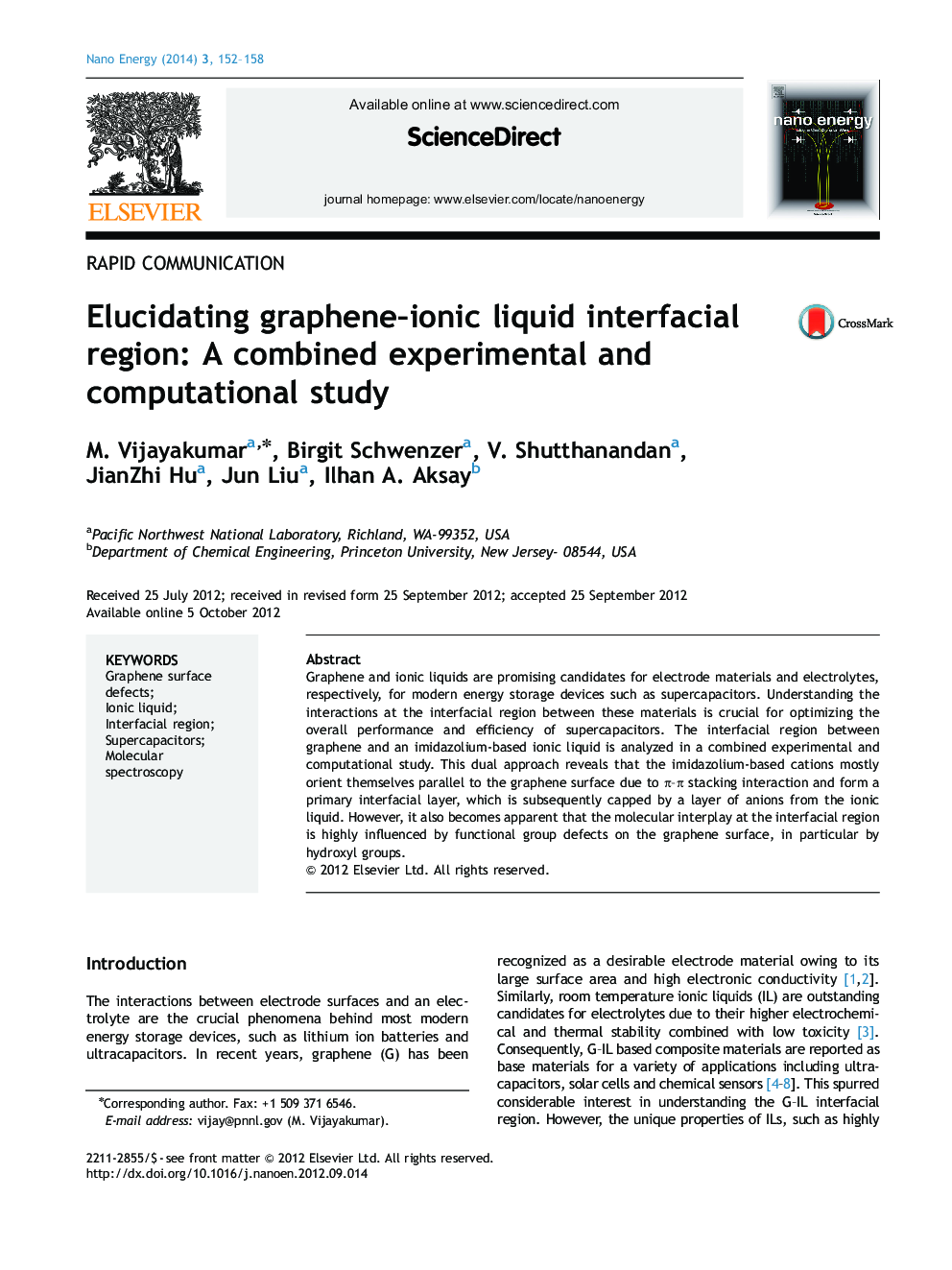| Article ID | Journal | Published Year | Pages | File Type |
|---|---|---|---|---|
| 1558053 | Nano Energy | 2014 | 7 Pages |
Graphene and ionic liquids are promising candidates for electrode materials and electrolytes, respectively, for modern energy storage devices such as supercapacitors. Understanding the interactions at the interfacial region between these materials is crucial for optimizing the overall performance and efficiency of supercapacitors. The interfacial region between graphene and an imidazolium-based ionic liquid is analyzed in a combined experimental and computational study. This dual approach reveals that the imidazolium-based cations mostly orient themselves parallel to the graphene surface due to π–π stacking interaction and form a primary interfacial layer, which is subsequently capped by a layer of anions from the ionic liquid. However, it also becomes apparent that the molecular interplay at the interfacial region is highly influenced by functional group defects on the graphene surface, in particular by hydroxyl groups.
Graphical abstractFigure optionsDownload full-size imageDownload as PowerPoint slideHighlights► New insights about molecular level structure at the Graphene-Ionic Liquid interface. ► We report the role of graphene surface functional groups on interfacial interactions. ► Experimental and DFT study reveals formation of ionic layer near graphene surface. ► Structural distribution of Ionic Liquid molecules near graphene surface defects.
